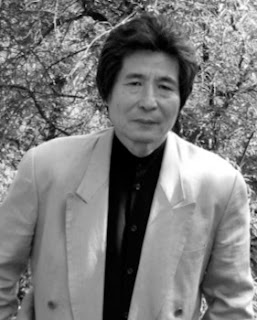Anthropology Like Bedding
"Forgotten Forest" by Kohei Oguri: anti-formatted movies, the anti-Hollywood, anti-Meet the ch'tites ... cash registers! The fifth installment of the Japanese master Kohei Oguri was presented at the Directors Fortnight at the Cannes Film Festival 2005, fifteen years after its Grand Jury Prize and International Critics Prize for The sting of death , and twenty-four years after his first work Doro no kawa . It was thus an event involving a succession of homages earned the filmmaker who is 60 years appreciated for its value.
 |
Kohei Oguri | |
Kohei Oguri
has always tried to struggle against the conformists of the 7th Art and against all formulas invented by the merchants of the Temple and for transforming a genuine artistic expression in industrialized product and code-barrisé. There has been much speculation about our company Merchant insane where images are ubiquitous, and how they are used by decision makers without ethics. Oguri wants to rehabilitate the image, giving it all its evocative power and fascination, as Jean Cocteau in his time was struggling to do so with Beauty and the Beast and safer still with his three masterpieces Orpheus, The Testament of Orpheus and Blood of a Poet . Back to real and deep sense of the image is back to its roots, that is to say the painting. The forgotten forest ( Umogeri for its Japanese original title) is a true work of art in itself, an art film of great pictorial richness. It is no exaggeration to say that nine out of ten shots for the film are similar to real life paintings with a clean and independent. And found so much beauty to the original pleasure of contemplation, that which had been without doubt the first humans in the absence of language. This result is admirable all the more surprising when we know that the movie was shot on digital camera, which rule does not necessarily finish and clarity ideal for the plan, the examples in recent years were also numerous and verifiable in the cinemas (apart from the excellent rendering of animated films). Here is the perfect visual triumph, and even if we know that Japan has always been a pioneer in electronic and digital technologies, there remains still in awe of beauty as on the big screen. The smallest hut filmed by Oguri suddenly becomes a beautiful landscape, thanks to his mastery of framing and treatment light. It will be understood that the screenplay and dialogues light The forgotten forest here are quite high, the challenge for Kohei Oguri elsewhere.

In the story is told, several characters find themselves interacting in a small town surrounded by mountains. Including three teenage girls who play regularly to imagine situations and individuals prone to comical musings. These dreams sometimes do they take life on the screen, unbeknownst to us, or is this reality that we are offered? What is here from fantasy and reality? And for what purpose this gallery of personalities taking shape before our eyes and populating the small quiet town? For what purpose, these banal lives, more or less crushed under the weight of reality and destiny arbitrary, if not one day to reach back into the forest 3,800 years ago buried by the eruption of a volcano , and finally emerges from land to allow access to live and to find? The pace of the film is slow, but this should not slow contemplative discard. Because it is intrinsically linked natural cycles of life and seasons. Sound and bold, it is a challenge to the cinema lambda edgy and noisy that we suffer for years now, and more generally the dominant ideology of modern society where everything must be done with haste and hurry, where everything must be speed and efficiency. And finally, where everything must be in complete opposition to the immaterial substance that led to the outbreak of the universe, our planet and our belonging to humanity.

The trailer of the film in OV subtitled



0 comments:
Post a Comment